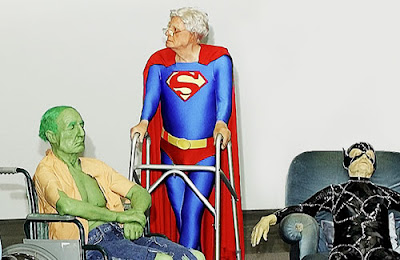
Monday, 10 May 2010
Tate Liverpool - DLA Piper Series - Sculpture

Pavel Buchler
Nick Crowe and Ian Rawlinson


Tuesday, 2 February 2010
Juan Munoz




I've been a fan Munoz's work since I saw his retrospective at Tate Modern a year or so ago. I really like his figures, the seem to occupy a space between humor and horror. I don't quite know whether to laugh or run for my life for fear of their seemingly inevitable animation. Also items such as scissors and a knife, which are held within two of the pieces pictured above, also add to the air of uncertainty and to unsettling the viewer... or at least they do me anyway.
Gilles Barbier
Wim Delvoye

















I came across a piece of Delvoye's work a while a go but it wasn't until today that I fully researched the artist. It's safe to say that I was pretty blown a way by his work. The 'completeness' of it really appealed to me, the body of work just feels well rounded, like he has considered every possibility of the work and then pushed it to it's limit. I also love the business like approach to the production of the 'Cloaca' series of work and that whole idea of the production line/factory idea within the art world. This approach is something that I feel will suite the subject matter of my current work really well and has already given me several ideas that I feel now are worthy of exploration.
http://www.wimdelvoye.be/
Saturday, 30 January 2010

http://www.rethinkclimate.org/titel/rethink-the-implicit/?show=bzw
tove storch
UNTITLED, 2009
- Cloth, silicone, metal, variable dimensions
Tove Storch’s artistic production occupies the field of kinetic sculpture, often with an added element of subtle mystery. In an investigation of the potential for cognition offered by the faculty of sight and the human body, she experiments with the qualities of the materials used and with the basic premises for sculptural production.
The work consists of five black display cases created on-site specifically for the room at Den Frie Centre of Contemporary Art and the daylight there. The cases consist of thin, semi-transparent fabric covered lightly with silicone and stretched onto delicate metal frames. Outlines and dark shadows reveal the presence of objects hidden behind the surface of the display cases, like suggestions of a secret life. At first glance the cases seem static, but upon closer inspection the veiled objects start moving and changing as the daylight changes and as the audiences moves in and around the work. Still, what seems at first to be recognisable remains abstract and the sombre, silent objects do not reveal their secrets. The unresolved quality of the experience is an important point to Storch. We see and wonder without being given a definitive answer. Storch plays with what we think we see and questions that which we take for granted.

http://www.rethinkclimate.org/titel/rethink-the-implicit/?show=bzj
Thilo Frank (de)
VERTICAL SKIP, 2009
- Light rope, motor with control unit, sensors
Thilo Frank’s artistic endeavours are infused with an interest in the physical interaction between the work of art and the spectator. The relationship between sight and movement is explored by means of technological tools. According to Frank, the non-verbal language of art has a distinct communicative potential; a statement made on the basis of the belief that knowledge and cognition often takes a physical, bodily experience as its point of departure.
The work Vertical skip is a light sculpture consisting of an eight-metre light cable suspended from the ceiling. Rotating around its own axis, the light cable creates a threedimensional shape in the dark room. Built-in sensors ensure that the speed changes as movements in the room are registered. When someone approaches the sculpture, its radius is widened, its speed is lowered, and its rhythm is changed. If more people are in the room at the same time, it takes a certain degree of navigation and co-ordination to agree on the right movement and speed. The sculpture then becomes a visualisation of this cooperation. With his poetic approach Frank directs our attention to our actions and their consequences – to how we affect our surroundings for better or worse.

http://www.rethinkclimate.org/titel/rethink-relations/?show=byx
Tomas Saraceno (ARG)
BIOSPHERES, 2009
- Inflatable modules, acrylic, rope, plants, water
Biospheres is the term used by Saraceno for his floating, transparent globes. Taking a metaphorical, poetic approach to serious subjects such as the overpopulation of Earth, environmental issues and migration, Saraceno attempts to create new relations between culture and nature. The biospheres of this work are inspired by careful scientific studies of e.g. the formation of clouds, soap bubbles and the geometric principles in spider webs. Several of the spheres contain plant-based ecosystems, while the largest of them invites spectators to step inside.
Saraceno is originally trained as an architect and his biospheres can be seen as models for alternative types of social spaces and habitats for human beings. In this context he is interested in the airspace (in other, outdoor projects he quite specifically works with the sky) which to him represents a “free” space; a space that is not subject to national restrictions and which still allows for the free movement across borders. Saraceno is an example of an artist who addresses the complex climate issues of the world without a nostalgic perspective; rather, he wishes to utilise the consequences of the ongoing global changes and technological developments in a positive, utopian rethinking of the way in which we have organised the world.
















